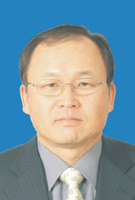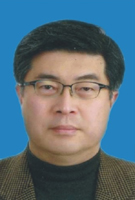

高分子科学系列讲座124、125讲:Prof. Doo Sung Lee,Smart Block Copolymers for Theranostics;Prof. Kookheon Char,Functional Thin Film Platforms and Intelligent Hybrid Materials
|
报告题目一:Smart Block Copolymers for Theranostics(No. PSLAB124-PS2012-02) |
|
报 告 人:Prof. Doo Sung Lee |
|
单 位:SUNGKYUNKWAN University, Korea |
|
报告时间:2012年3月31日(星期六)上午9:00 |
|
报告地点:主楼四楼学术厅(410房间) |
|
报告内容摘要:
Stimuli-responsive polymeric systems, including micelles and hydrogels, have attracted extensive attention as "smart" materials for biomedical applications. In this presentation, we would like to introduce some recent works on the pH and/or temperature responsive micelles and hydrogels for controlled drug delivery and molecular imaging applications. In our system, the pH-responsive polymeric micelles were composed of hydrophilic methyl ether poly(ethylene glycol) (MPEG) and pH-responsive degradable poly(β-amino ester) (PAE) segments. This diblock copolymer, which could self-assemble nano-sized micelles with core-shell structures under aqueous conditions, showed noticeable the pH-dependent micellization-demicellization behavior applicable to acidic tumor targeting. Antitumor efficacy of doxorubicin loaded pH-responsive polymeric micelles was evaluated from in vitro and in vivo experiment. Besides, pH-responsive micelles were used for MRI (magnetic resonance imaging) agent carrier. From mouse with ischemia model, feasibility of iron oxide carrier was evaluated. We have also investigated an injectable carrier of pH/ temperature sensitive hydrogel, penta-, tri- and multi-block copolymer PAE-PCL-PEG-PCL-PAE, for controlled drug/protein delivery. The cationic nature of PAE is used as the second function to make the ionic complexes with anionic biomolecule loaded into the hydrogel such as insulin. As a result, the release of drug/protein from this hydrogel device can be controlled by the degradation of copolymer. To prove the simulations, the cumulative release of the protein from the complex gel was investigated in vitro and in vivo experiment. |
| 报告人介绍 |
Prof. Doo Sung Lee |
 |
EDUCATION AND APPOINTMENTS PROFESSIONAL ACTIVITIES MAJOR RESEARCH INTERESTS
|
|
报告题目二:Functional Thin Film Platforms and Intelligent Hybrid Materials(No. PSLAB125-PS2012-03) |
|
报 告 人:Prof. Kookheon Char |
|
单 位:Seoul National University, Korea |
|
报告时间:2012年3月31日(星期六)上午9:00 |
|
报告地点:主楼四楼学术厅(410房间) |
|
报告内容摘要:
Polymer thin films with nanostructure and functions have recently received much attention due to many important potential applications such as nanolithography and nanopatterning for nanodevices, biologically relevant surfaces for sensors and drug delivery, photonic or electronic devices, and many others. Many nano-objects (such as quantum dots, nanotubes or nanowires, and nanosheets) carrying unique functions should be incorporated into the polymer thin films to achieve such practical goals. Tremendous efforts have also been devoted to the intelligent hybrids for energy efficient optoelectronic devices with multifaceted approaches such as design and synthesis of nanomaterials, optimal realization of nanostructures, and their relationship with device performance. Particularly, the design and noble synthesis of functional materials such as semiconductor nanocrystals (NCs), understanding the interfacial phenomena involving functional inorganic nanomaterials dispersed in an organic (or polymeric) medium, and manipulating the interfaces in various device structures are the ones of the most decisive factors for the successful realization of optoelectronic devices because critical issues such as photogeneration, charge recombination, and exciton transfer in the optoelectronic system typically take places at the interfaces. In this presentation, I will discuss recent progresses in our laboratory in block copolymer thin films and layer-by-layer thin film depositions to program (multiple) functions within the thin films. Also, the hybridization schemes for organic-inorganic structures optimal for various applications will be presented and the hierarchical structure mimicking the Nature, combining both the bottom-up and the top-down approaches, will be briefly discussed Considering the wide application areas of both functional thin films and hybrid materials, the approaches taken in present study are likely to open up new possibilities for new advanced materials or devices with multifunctional properties. |
| 报告人介绍 |
Prof. Kookheon Char |
 |
1984–1989: PhD, Chemical Engineering, Stanford University Areas of Research Interests
|